#ramen history
Explore tagged Tumblr posts
Text
Ramen’s Journey: From Japan’s Streets to American Dorm Rooms
If there’s one food that has made its way from the heart of Japan’s bustling streets to the most humble American dorm rooms, it’s ramen. This unassuming noodle dish has traveled across the globe, evolving from a traditional Japanese comfort food to a staple of college life in the U.S. And if you’re like me, you’ve probably eaten more than your fair share of Top Ramen during those lean, busy…
#authentic ramen#cheap college meals#college food staple#dorm room meals#instant ramen#Japanese ramen#Momofuku Ando#Nissin Foods#noodle soup#Philadelphia ramen#quick meals for students#Ramen#ramen art#ramen bowl#ramen broth#ramen culture#ramen evolution#ramen flavors#ramen history#ramen house#ramen in America#ramen in Japan#ramen noodles#ramen recipes#ramen shops#ramen toppings#ramen trends#ramen vs instant noodles#ramen vs Top Ramen#Roe Ramen and Sushi House
3 notes
·
View notes
Text
I know a lot of people take five pebbles being relatively young as him being like, a kid but like, Come On, I know he's been around for possibly milennia but I don't think it's possible to make a character who's more Spiritually 22 years old.
#rain world#rainworld#five pebbles#he's not a kid he's like#22 year old minimum wage art history major coded#I Know This To Be True.#we need less (preferably no) five pebbles infantilisation more five pebbles one nighters.#if he had a mouth he would use it to eat cup ramen and pizza pockets#This Was Confirmed.#also five pebbles discord moderator jokes make no sense either. that's not his role in the chatroom dynamic at all#MOON is the moderator and iterator chatrooms are much more like IRC. iterator internet dynamics are like. late 2000s
339 notes
·
View notes
Text
ramen and studying while sick :’)

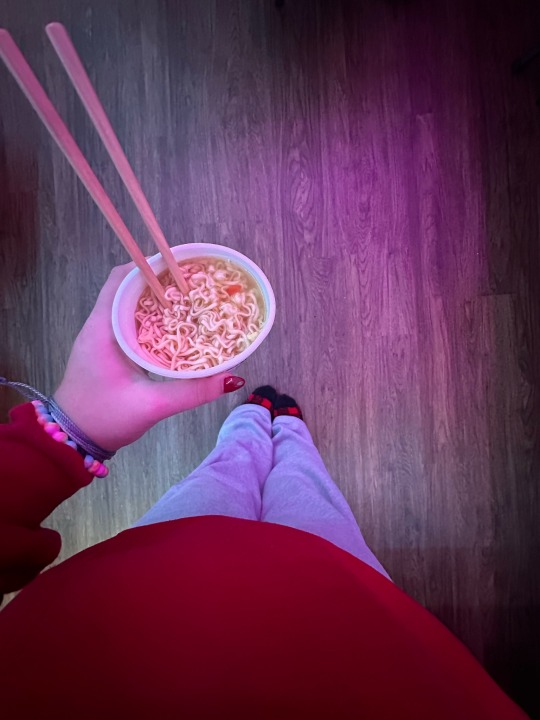
#life#live#college life#dark aesthetic#ethical lifestyle#good life#ramen#ramen noodles#college#online#online student#study aesthetic#study blog#study notes#student#studyblr#studyspo#study motivation#student life#studying#history#beautiful#cozycore#cozy aesthetic#sick#ethics#kiss of life#study inspiration#philosophy#philanthropy
21 notes
·
View notes
Text






Shin-Yokohama Ramen Museum 新横浜ラーメン博物館
All of the ramen shops in the museum are setup in a recreation of Shitamachi Tokyo. From the movie billboards it appears to be set in 1957.
#Shin-Yokohama Ramen Museum#新横浜ラーメン博物館#ラーメン#ramen#shin yokohama#yokohama#japan#ramen noodles#museum#travel#travel photography#japanese food#japanese history#photography#photo#vintage#1957 japan#1950s japan#1950s#jellyphresh
7 notes
·
View notes
Text

Day in Fandom History: February 18…
It’s another Baby Bears episode where they finally land at their destination in Japan and are in search of food where they meet a struggling ramen chef who is trying to both save her shop and get her father’s approval, thus the three decide to help out. “Ramen” premiered on this day, 6 Years Ago.
6 notes
·
View notes
Text

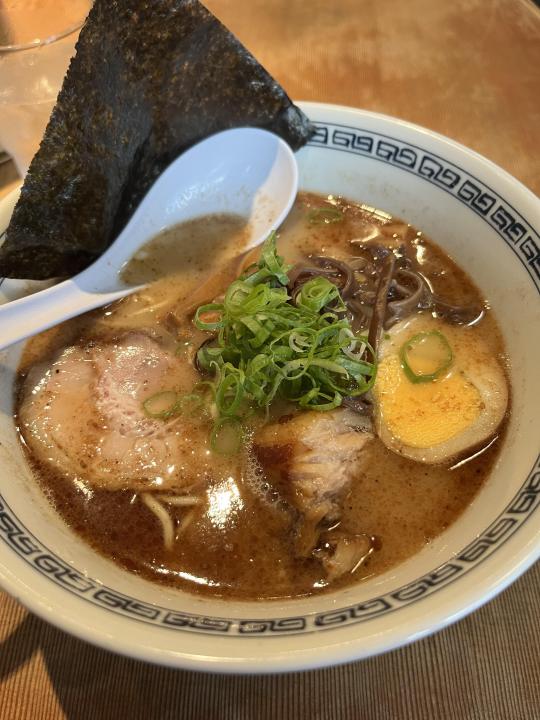
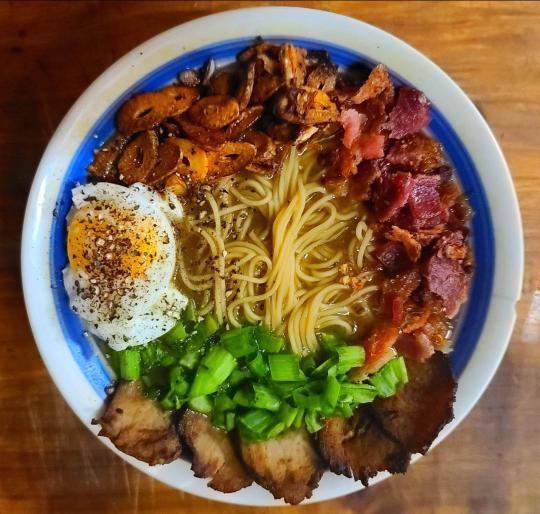
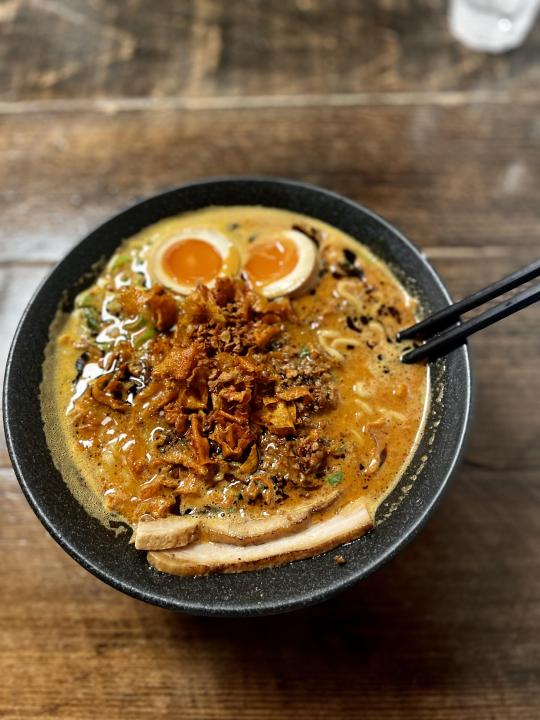
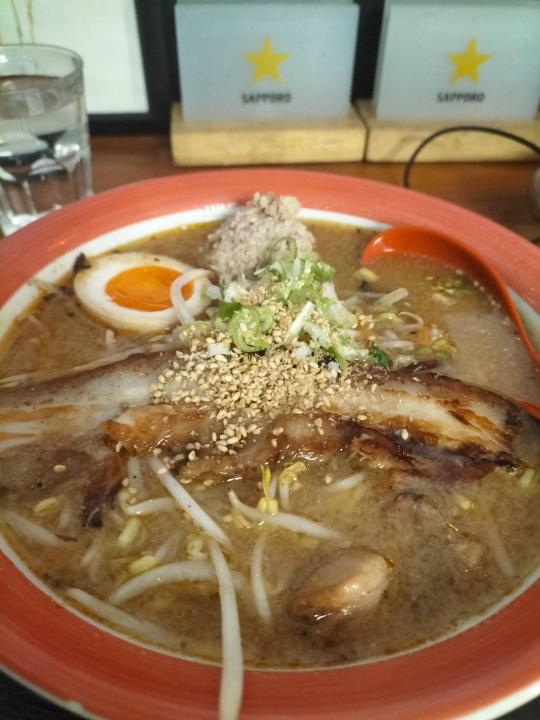

Le Ramen qui est un plat traditionnel et emblématique du Japon est avant tout une recette héritée de la cuisine Chinoise. Le mot même de Ramen est emprunté au chinois Lāmiàn qui signifie en mandarin Nouilles tirées. Ainsi, la base moderne de ce plat tient ses origines dans la culture Hui, une minorité musulmane du Lanzhou. Mais on peut remonter l’origine des soupes de nouilles où des pâtes faites de millet ont été daté de plus de 4’000 ans, donc bien avant l’islam et les musulmans. l’Histoire du Ramen est assez récente comparé aux croyances populaires. Le plat en lui-même date du début de l'Ère Meiji qui s’étend de 1868 à 1912 et donc, du début du 20ème Siècle. La première boutique de Ramens connue est une boutique de Yokohama tenue par des immigrés chinois s’étant installée dans le quartier. Ses ramens étaient connus sous le nom de Soba Chinoises ( Chuka Soba ), Soba de Chine ( Shina Soba ) ou bien de Soba de Nankin. Les ramens de Yokohama étaient faits d’un bouillon, de r��ti de porc, de pousses de bambou et d’un demi-oeuf dur. D’autres sources renvoient à un restaurant d’Asakusa ayant recruté un chef cuisinier chinois en 1910. Le ramen d’Asakusa été connu sous le nom de Shio Ramen où du Sel puis plus tard de la Sauce Soja ont été ajoutés. Le plat devient réellement populaire qu’après la Seconde Guerre Mondiale via l’émergence des stands ambulants de ramen. Le Bouillons est une des parties les plus importantes du Ramen. Sa base est généralement faite d’Os de Porc, d’Os de Poulet ou de Fruits de Mers et nous pouvons aussi trouver différentes variétés de bouillons.
Les ramens où de la Sauce Soja ajoutés dans le bouillon sont les Shoyu RamenIl existe un total de 5 sauces sojas pouvant être mis dans le bouillon. Nous retrouvons la Sauce Soja Koïkuchi ( Corsée ), la Usukuchi ( Légère ), la Tamari ( Forte concentration de Soja ), la Saïshikomi ( Fermentation Prolongée ) ou la Shiro ( Blanche ). Toutefois, la majorité des restaurants de Shoyu Ramen utilise la Sauce Koïkuchi. Dans les Shoyu Ramen reconnu nous avons le Niboshi Shoyu Ramen à base de bouillon à l’Os de Porc et au Soja, mais en y ajoutant des Niboshi ( Sardine Infantile Séchée ) et le Shoyu Saïshikomi Ramen à base de bouillon à l’Os de Poulets, mais en utilisant une Sauce Shaïshikomi non Pasteurisé et des poulets distinguée comme ceux d’Aizu.
Les ramens où du Sel ajoutés dans le bouillon sont les Shio Ramen. Deux catégories de sels existent telle que le Sel d’Origine Minéral et le Sel d’Origine Marins. Le sel de mer commun est généralement importé d’Australie avant d’être dissous dans de l’eau de mer japonaise avant d’être de nouveau séché. Dans les Shio Ramens reconnu nous avons le Shio Ramen de Konjiki Hototogisu rajoute des palourdes tout en ayant un bouillon fait de Sel Marin d’Okinawa, Sel Minéral de Mongolie, Poissons Frais, Algues Séché et de nombreux Légumes et le Shio Ramen de Motenashi Kuroki qui est composé de six type de sel différent comme le Sel Minéral de Mongolie ou le Sel aux Algues. Son bouillon est fait à partir de Poulets Entiers, de Poissons Volants Grillés ou encore de Maquereaux Séchés.
Les ramens avec de la Pâte de Soja Fermentée ajoutés dans le bouillon sont les Miso Ramens. Le Miso existe en différentes versions avec du Riz, du Blé ou simplement du Soja puis est laissé fermenté et plus il est laissé maturé, plus il devient rouge et salé. Dans les Miso Ramens reconnu nous avons le Sapporo Miso Ramen où du Saindoux forme une épaisse couche isolante en surface. Le bouillon est légèrement relevé grâce à du Poivre Japonais, du Gingembres et de nombreuses autres Épices. Nous avons aussi le Sapporo Miso Ramen du Sapporo Raïden où le bouillon est relevé avec du Gingembre, de l’Ail et autre Alliacées lui octroyant un parfum extraordinaire.
Les ramens avec des Os de Porcs ajoutés dans le bouillon sont les Tonkutsu Ramens. C’est un bouillon blanc où les Os de Porcs sont bouillis pendant une longue période et à haute température tandis qu’une sélection drastique permet d’évité la forte odeur désagréable lors de sa préparation. Dans les Tonkutsu Ramen reconnu nous avons le Rokutonken Tonkutsu Ramen où seuls les os du crâne du porc sont utilisés dans le bouillon avec une vingtaine d'ingrédients supplémentaires. On peut ainsi retrouver de la Sauce Tare Salée avec dedans de l’Ail Grillée dans de l’Huile de Sésame ainsi qu’une huile parfumée secrète et nous avons le Tonkutsu Ramen de Style Hakata du restaurant Hakata Nagahama Ramen Tanaka Shôten qui est secrètement tenue tandis que les fourneaux sont constamment allumé.
Les ramens avec des Produits de la Mer ajoutés dans le bouillon sont les Gyôkai Ramens. Les produits utilisés sont généralement de la Sardine Séchée, de la Bonite Séchée ou encore de l’Algue Konbu Séchée. Ils sont ainsi nommés “Dashi”. Dans les Gyôkai Ramen reconnu nous avons le Nagaochukasoba Gyôkai Ramen qui est fait de Sardines Séchée et de son bouillon clair et du Watanabe Gyôkai Ramen reconnu grâce au copeaux de Bonite Séchée et Maquereaux Séchée tout en étant combiné avec un bouillon Tonkotsu faisant de lui un bouillon Tonkutsu-Gyôkai.
Les ramens avec du Poulet ajoutés dans le bouillon sont les Tori Ramens. Dans ses bouillons les Carcasses, les Pieds et la Peau tandis que certains restaurants s’octroient le luxe de les utiliser en entier pour le bouillon. Dans les Tori Ramen reconnu nous avons le Tori Ramen du restaurant Menya Sô Takadanobabahonten utilisant un bouillon Torichintan qui est un bouillon de poulet et de pied de porc et le Tori Soba au Poulet AOC de Hinaï tout en étant relevée par des Sardines Séchées du restaurant Ramen Tenjinshita Daïki.
Pour finir, nous avons ceux avec des Os de Boeuf ajoutés dans le bouillon qui sont les Gyûkotsu Ramen. Les Os de Boeuf sont utilisés depuis récemment à cause de leur taille et de la difficulté d’en tirer un bouillon et des cuisines exigües des restaurants de ramens. Dans les Gyûkotsu Ramen reconnu nous avons le Gyûkotsu Ramen du restaurant Ramen Dining Jingu où le bouillon est fait de Boeuf, Porc et de Poulets tandis que des tranches de rosbifs sont déposée sur les bouilles en guise de Chashû et nous avons aussi le Gyûkotsu Ramen du restaurant Gyûkotsu Ramen Matador où de tendre et juteuse tranches de rosbif, cuites à basse température sont entreposé.
7 notes
·
View notes
Text

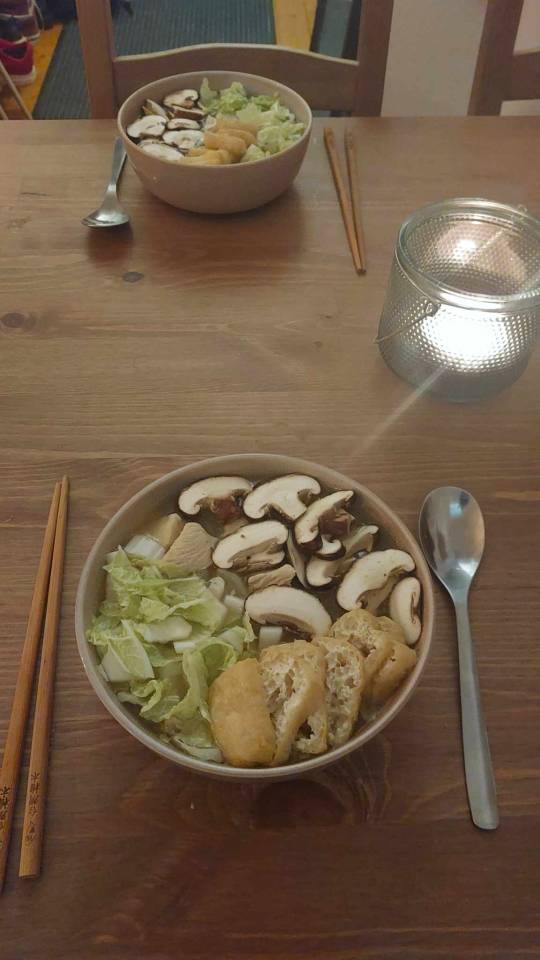
CHANKO NABE (SUMO WRESTLER SOUP, 1937)
In the midst of planning our upcoming trip to Japan, and with the weather changing from summer to fall, I deemed it necessary to try making this next warm and cozy Tasting History dish: Chanko Nabe. This hearty soup, usually served alongside many bowls of rice, was a common meal for sumo wrestlers during training in the early 20th century. During the Edo Period (1603-1868), sumo became less a way for samurai to train for battle and more of a competition between elite athletes. As this change came to pass, sumo wrestlers started to become known for their large size, a result of eating hearty dishes like Chanko Nabe alongside lots of rice. There is technically no one recipe for Chanko Nabe, as it varies from place to place and can heavily depend on what vegetables are in season. Since a chicken is 'agile and stays on two feet', it is seen as good luck by sumo wrestlers. Therefore, during a sumo tournament, Chanko Nabe is usually made with chicken. This recipe comes from the Chanko Kawasaki Restaurant in Tokyo, from a former sumo wrestler who began making this recipe for the restaurant in 1937. However, the dish can otherwise be made with whatever meat and vegetables are on hand, and can really be customized to your tastes. See Max’s video on how to make the dish here or see the ingredients and process at the end of this post, sourced from his website.
My experience making it:
I strayed a little bit from the stated recipe for this one, partially because the original recipe was meant to be customized and tweaked depending on what's available. I found most of the ingredients I needed at my local Asian supermarket. Instead of chicken legs, I used 3 boneless, skinless chicken breasts, and I decided to omit the chicken livers entirely, because I honestly worried that the texture of cooked liver would ruin an otherwise lovely dish. I followed Max's ingredient list pretty well otherwise, but I omitted the pickled daikon. I couldn't find thinly sliced fried tofu, so I decided to use agedashi tofu-style, fried, cubed tofu, but cut in thin slices. I also only used 1 pack of shirataki noodles, as I often struggle with strange-textured food, and Max exclaims several times about the unique, gelatinous texture of the shirataki.
I first brought the chicken broth to a simmer, then added the dashi powder, mirin, and miso paste. I then added the soy sauce and minced garlic, then let the pot alone to simmer for half an hour. While it simmered, I prepped and chopped my other ingredients. Next I added the chicken, then the carrot, onion, and daikon. After simmering for another 15 minutes, I decided to turn off the heat and ladle the Chanko Nabe into bowls. This is when I added some sliced shiitake mushrooms, sliced agedashi tofu cubes, and chopped Chinese cabbage to each bowl to let those ingredients just lightly cook in the piping hot broth. In previous hotpots I have had, I have preferred lighter ingredients like this not being overcooked, so I thought some light heat off the element would be perfect. This also made it easier to arrange the dish into one that was a bit more pleasing to look at when I served it forth!
My experience tasting it:
My husband and I dug in with our favourite chopsticks (which we brought back from our previous trip to Taiwan) - meals are made all the more special when you can tie them to memories! I first tried some of the broth by itself. It was like a warm hug - savoury flavour that was perfectly balanced filled each and every tastebud! Familiar Japanese ingredients were noticeable - the faint taste of ocean from the dashi, the saltiness from the soy sauce, and the deep and complex flavour of the miso - but the most dominant flavour was the chicken broth. In future, I would consider even slightly upping the amount of soy sauce, dashi, and miso in order to make those notes a little stronger. Next, I tried some of the Chinese cabbage. It was a lovely vessel for the broth and it retained a little crunch while still seeming 'cooked' in terms of its flavour (no raw bitterness). I tried the fried tofu next. Its fried coating and bubbly inner texture had taken in so much of the broth that it was like a flavour bomb as I bit into it! Definitely a highlight in the dish. Now, confession time: I have never tried shiitake mushrooms before. Let's just say they absolutely did not disappoint! Normally, I am not a fan of the texture of mushrooms, but these had such a nice little spice to them that I was willing to overlook their texture. I consider that a success! I'll admit however, that the chicken, though tender enough, was pretty underwhelming and did not seem to absorb the flavours too well. Next time I would use shredded chicken perhaps, or omit the meat element entirely. The dish wouldn't miss it.
Last but not least, I tried the part of the dish I was most hesitant about: the shirataki noodles. They slurped up just like ramen noodles, which was a plus. Despite Max mentioning multiple times how gelatinous they were, I didn't have too much of a problem with their texture. I would describe them more as dense than gelatinous. My only qualm with them was that they were a little hard to chew and break with my teeth. Overall, the Chanko Nabe was enjoyed thoroughly by both my husband and I, and I also enjoyed the leftovers at work the next day. I plan on making it again, for sure! Chanko Nabe was fairly quick to make, and the process was not too complex. I fully intend on playing around with some different ingredients to find my favourite combo, but the ingredients Max used are a great base. We were so full after eating this meal, we definitely felt like sumo wrestlers. If you end up making this dish, if you liked it, or if you changed anything from the original recipe, do let me know!
Harder-to-find ingredients:
Check your local Asian supermarket!
Chanko Nabe (Sumo Wrestler Soup) original recipe (1937)
Sourced from Chanko Kawasaki Restaurant in Tokyo from their 1937 recipe.
Pieces of chicken meat and chicken liver are added to an earthenware pot containing chicken stock. The dish also includes carrots, onions, Chinese cabbage, pieces of fried tofu and shirataki…
Modern Recipe
Based on Chanko Kawasaki Restaurant's recipe (1937) and Max Miller’s version in his Tasting History video.
Ingredients:
6 cups (1.5 L) chicken broth
1 tbsp dashi powder
1/4 cup (60 ml) mirin
2 tbsp white miso
1 tbsp soy sauce
1 tsp minced garlic
4 boneless skinless chicken legs, cut into bite-sized pieces
4 chicken livers, cut into bite-sized pieces
1/2 cup chopped carrot
1/2 cup chopped onion
Chinese or napa cabbage
2 packs of shirataki noodles, drained and rinsed
Several slices abura age (fried thinly sliced tofu)
Fresh and pickled daikon radish
Shiitake mushrooms
Method:
In a large pot over medium-high heat, bring the chicken broth to a boil. Stir in the dashi powder and boil for 1 minute.
Lower the heat to medium and add the mirin and miso. Stir for a few minutes until the miso has completely dissolved and the broth is cloudy.
Stir in the soy sauce and garlic, then simmer for 30 minutes.
Bring the broth to a boil. Add the chicken and cook for 5 minutes.
Add the carrot, onions, daikon, and any vegetables that will take longer to cook. Cover and simmer for 10 to 15 minutes.
Add the rest of the ingredients and cook for a few more minutes, (or more, or less, depending on your preference). People will cook it for a long time, a short time, or turn off the heat and let the ingredients just warm up.
For extra authenticity, serve the chanko nabe forth with large quantities of steamed rice.
#max miller#tasting history#tasting history with max miller#cooking#keepers#historical cooking#20th century#Chanko Nabe#Chanko Kawasaki#1930s#Japan#Asia#Ramen#sumo wrestlers#japanese recipes#meat#chicken#tofu#soups
3 notes
·
View notes
Text





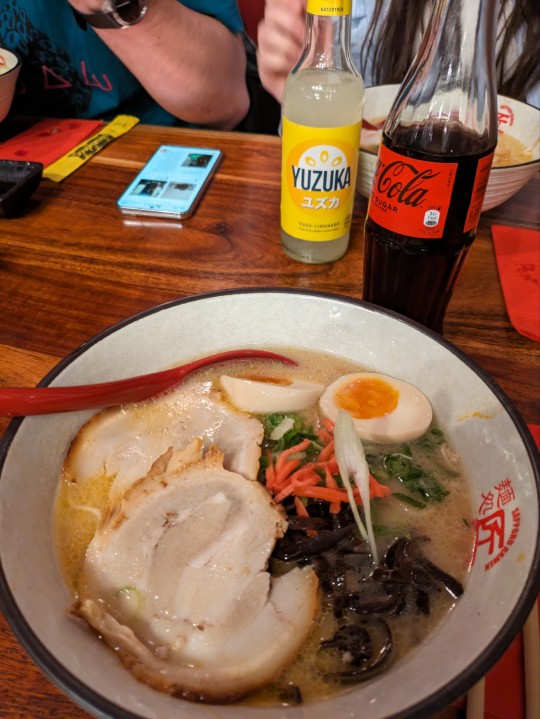
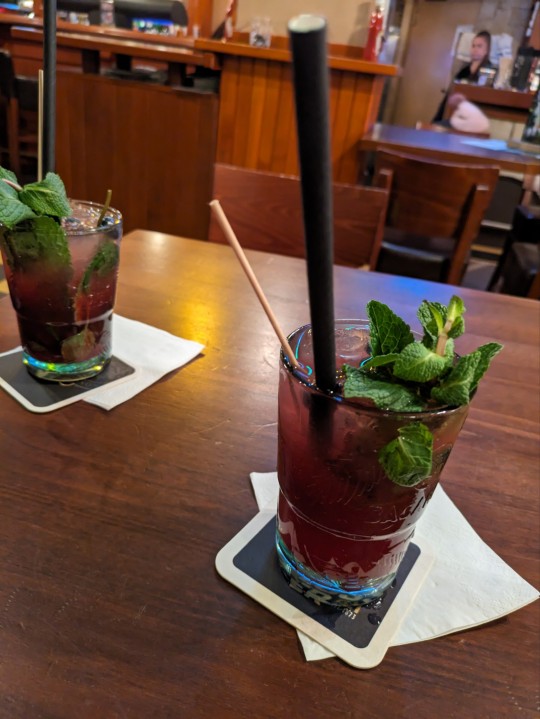
Last day of uni and once more a bit private stuff to remind myself of a good start into the year 🤍✨
"Men make history"
– Treitschke 1879
#studying#studyblr#study#study blog#ambience#student life#university#german university#history#history student#public history#ramen#ramen noodles#cake#cafe aesthetic#cafe#mojito#drinks
2 notes
·
View notes
Text
youtube
nooooooooooooooooodz
#china#ramen#noodle#noodles#the ramen rater#theramenrater#food#hans lienesch#instant#soup#chinatown#aph china#instant noodles#hws china#east asia#china news#vietnam#myanmar#taiwan#chinese history#Youtube
2 notes
·
View notes
Text
--
#entering hour 6 at the library 🙂#it's raining heavily outside so I'm not even mad that I'm in here and not out there#but god do I wish I could stop reading about fucking Luther#two more articles and i can finally go home T-T#same thing again tomorrow except I'm going to the christmas market afterwards :)#which is better than today's reward (watching a political comedy and eating instant ramen bc i'm too lazy to go shopping)#also btw why is the educational science library so much nicer than the history/ linguistics one???#they have plants!!! and windows!!! holy shit#anywaves catch y'all later nerds <3
2 notes
·
View notes
Text

i need to do my homework
0 notes
Text
Ramen 🤝 Pizza: The working man's delight.
1 note
·
View note
Text
How Did Korean Ramen Evolve From Instant Noodles to Gourmet Delights?

Korean ramen has evolved dramatically over the years, rising from humble beginnings as an affordable meal to a globally recognized gourmet dish. With each innovation, from instant noodles to carefully crafted ramen bowls, Korean ramen reflects the country’s rich food culture while catering to the modern world’s desire for quick and delicious meals. In this blog, we’ll explore the journey of Korean ramen, its transformation, and why it’s become such a beloved staple across the globe. Along the way, we’ll also dive into some key ramen-related trends and keywords that have made it a culinary phenomenon.
The Origin of Korean Ramen: A Brief History
Korean ramen, or "ramyeon," traces its roots back to the 1960s, inspired by the instant noodles introduced by neighboring countries. While ramen has its origins in East Asia, specifically Japan and China, Korea quickly adapted it to create a unique version that appealed to local palates. The original ramen was simple—typically a basic broth with a packet of instant noodles. Over time, however, this simplicity turned into an art form, as ramen evolved to become a highly customizable dish with countless flavors and variations.
What began as a convenient, affordable, and filling meal for students and workers has now become a gourmet sensation, featured on restaurant menus and food blogs worldwide. The best Korean ramen is now seen as a symbol of Korean culinary innovation, combining traditional flavors with modern twists.
The Rise of Instant Noodles: Revolutionizing Fast Food
Instant ramen revolutionized the food industry by offering a quick meal option that anyone could prepare in minutes. Packaged in a variety of ramen flavors, these instant ramen recipes allowed people to enjoy a hearty meal without much effort. The instant noodle bowl has become a staple in homes, dormitories, and workplaces due to its convenience and affordability.
One of the reasons Korean ramen became globally popular is its ability to cater to various tastes. Whether you’re in the mood for something spicy, savory, or light, there’s a ramen noodle soup that fits your craving. Many variations use different ramen noodles ingredients, like vegetables, meats, or seafood, enhancing the overall experience.
The success of instant noodles isn't solely about convenience. The best instant ramen noodles offer a complex flavor profile that can easily rival more elaborate meals. Today, you can find everything from spicy ramen noodles near me to more nuanced, mild-flavored varieties that appeal to a wide audience.
From Packets to Bowls: The Art of Korean Ramen Bowls
As Korean ramen gained traction, chefs began experimenting with ways to elevate the dish. While ramen noodles packets near me were still popular, food enthusiasts sought out ramen dishes that offered a more gourmet experience. These gourmet bowls are often crafted with fresh ingredients, including handmade noodles, premium broths, and unique toppings.
Restaurants now serve specialized Korean ramen bowls that often feature rich, spicy broths and toppings like kimchi, tofu, pork, and eggs. This emphasis on fresh ingredients and traditional Korean flavors is what sets K-food apart from other ramen varieties around the world. Many eateries in Korea and abroad have made it a point to serve the best packaged noodles with added gourmet elements to entice ramen lovers.
Why Korean Ramen Is Unique: The Perfect Balance of Flavors
One of the things that makes Korean ramen distinct from other ramen dishes is the balance of spicy, savory, and umami flavors. Ramen food in Korea often incorporates a generous amount of chili powder, soy sauce, garlic, and fermented vegetables. These ingredients create a depth of flavor that is hard to find in other ramen brands.
For those who enjoy spice, noodle spicy ramen is a must-try. Known as some of the world's spiciest noodles, Korean ramen takes heat to a new level. These fiery bowls have gained cult status among spice lovers, particularly for those who seek out spicy ramen noodles near me.
On the flip side, milder varieties of ramen also exist for those who prefer a softer flavor profile. Whether it’s the rich, creamy broths or the tangy kimchi-infused noodles, ramen in Korea offers something for everyone.
The Shift Toward Premium and Gourmet Ramen
As the demand for more diverse and sophisticated flavors grew, Korean ramen began evolving beyond its instant roots. Gourmet ramen shops opened up in cities around the world, offering hand-pulled noodles, slow-cooked broths, and premium toppings like marinated eggs, pork belly, and seafood.
This shift was a response to consumers seeking more than just a quick meal—they wanted an experience. These high-end ramen dishes have raised the bar for what ramen could be. Now, good instant ramen is not just about convenience but also about creating a high-quality meal at home. With the right ingredients, even an instant noodle bowl can be transformed into a gourmet feast.
While cheap ramen noodles were once a major selling point, the modern-day ramen consumer is more interested in the quality of ingredients and the overall taste experience. Many people are willing to pay a higher ramen noodle price for the best quality, be it in restaurants or for premium best ramen brand products sold in stores.
Korean Ramen's Influence Worldwide
Korean ramen has not only captured the hearts of Koreans but also people around the world. As more people discover Korean culture through K-pop, K-dramas, and other exports, Korean food has naturally become a gateway for many to explore the culture. Korean ramen, with its bold flavors and satisfying texture, has become one of the most accessible ways for people to experience K-food outside of Korea.
Today, you can find the best Korean noodles and best Korean ramen in supermarkets, specialty stores, and even in online stores. Many fans of ramen around the world often search for "Korean noodles packet near me" to stock up on their favorite varieties.
Even in the era of fast food and pre-packaged meals, the appeal of ramen has not diminished. People still flock to ramen shops for authentic flavors, and supermarkets now carry ramen brands that cater to gourmet tastes. In fact, the ramen noodles can vary greatly depending on whether you are buying a simple instant noodle packet or a premium version.
How to Choose the Best Korean Ramen for You
With so many options available, how do you choose the best brands of ramen noodles? It often comes down to personal preference. For those who like spice, spicy ramen noodles near me are a perfect choice. If you prefer something more balanced, look for ramen varieties that offer rich broth flavors with mild seasoning.
Whether you’re looking for a quick meal or a gourmet experience, the world of Korean ramen has something for every taste bud. With endless possibilities for customization and innovation, it’s no wonder that Korean ramen has become a global culinary sensation.
Conclusion: Korean Ramen’s Ever-Evolving Journey
From a simple packet of instant noodles to a gourmet dining experience, the evolution of Korean ramen mirrors the innovation and creativity of Korean cuisine. With options ranging from cheap and easy to gourmet and premium, ramen has secured its place as one of the most beloved comfort foods worldwide. As we continue to embrace K-food trends and the search for the best packaged noodles, it’s clear that Korean ramen will remain a staple in kitchens and restaurants for years to come.
So, whether you’re savoring original ramen or exploring the flavors of the best noodles, one thing is certain—Korean ramen will continue to surprise and delight food lovers everywhere.
#Korean Ramen Evolution#Instant Noodles to Gourmet#Best Korean Ramen#Ramen Noodle Recipes#Korean Ramen History#Spicy Korean Ramen#Instant Ramen Recipes#Korean Noodle Trends#K-Food Ramen#Best Ramen Brands#Ramen Dishes#Gourmet Korean Ramen#Ramen Flavors#Korean Instant Noodles#Ramen Food#korean cuisine
1 note
·
View note
Text

Day in Fandom History: February 18…
It’s another Baby Bears episode where they finally land at their destination in Japan and in search of food where they meet a struggling ramen chef who is trying to both save her shop and gets her father’s approval, thus the three decide to help out. “Ramen” premiered on this day, 5 Years Ago.
2 notes
·
View notes
Text
The Cup Of Noodles MUSEUM?
You call and tell us that you went to college without eating a single noodle of ramen, and we’ll call you a liar. The only thing more incredible of the taste of Ramen in the middle of a long, late night is the fact that they made a museum about it. This interactive museum is designed to stir the creativity and curiosity within every child and provide a rich educational experience. Through the…
youtube
View On WordPress
#Cup a noodles#Cup Of Noodles#DJ Storm#DJ Storm Presents#DJ Storms Blog#Food#History#Ideas#Japan#Japanese#Museum#Ramen#Ridiculous#Travel#Unique#Youtube
1 note
·
View note